The Fundamentals of Macaroni & Cheese
Macaroni and cheese is hands down one of my favorite things to make. During the winter and cold, blustery times of the year, I make macaroni and cheese at least once a month. Once you get the hang of making a roux, it's a simple dish to toss together without too much fuss and muss! I often don't even measure ingredients. It's a great recipe to make from sight and taste. It doesn't require any fancy equipment and you can mix and match in any number of ingredients. I like to have fun with the cheese and "milk" substitutes. Personally, I don't eat a lot of milk. I'm absolutely obsessed with cheese! Although I'm slightly lactose intolerant. So, if dairy isn't necessarily your friend, there are plenty of ways around this without adding milk or with other lactose-friendlier ingredients.
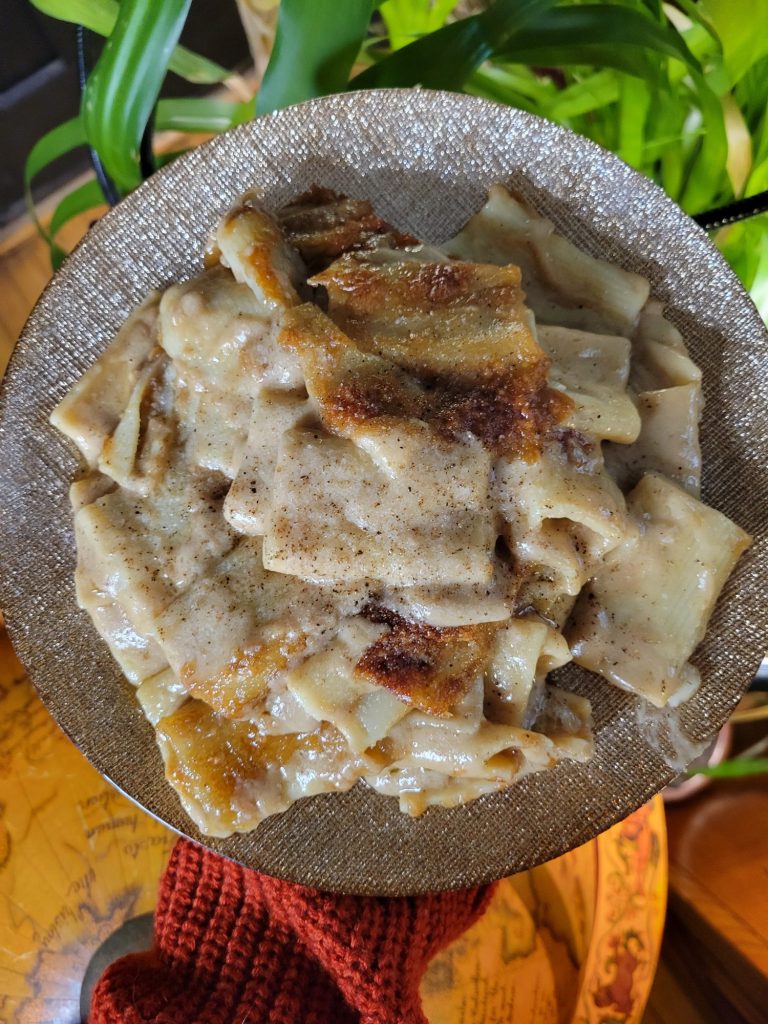
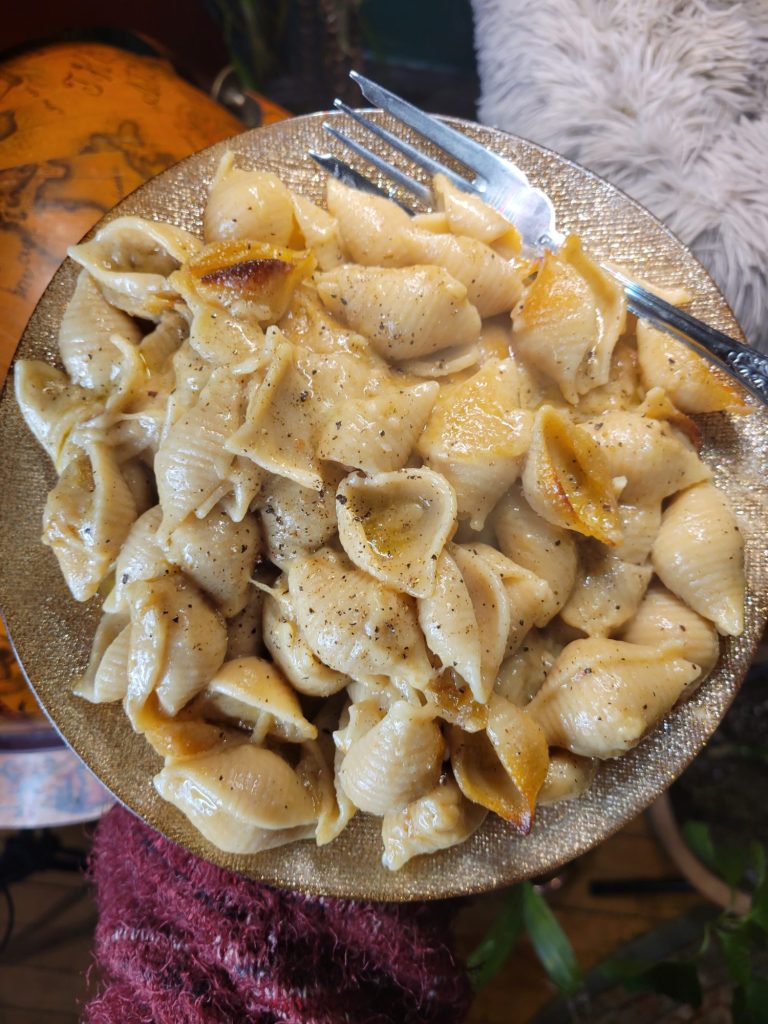
Is Macaroni & Cheese Just for Kids?
Macaroni and cheese is a staple for children. But some things age like a fine wine. I routinely even add wine to macaroni. There are plenty of ingredients that are fun for children and adults, alike. This article outlines add-in toppings, different types of noodles, cheese substitutes, milk substitutes, adding in wine, as well as vegan alternatives.
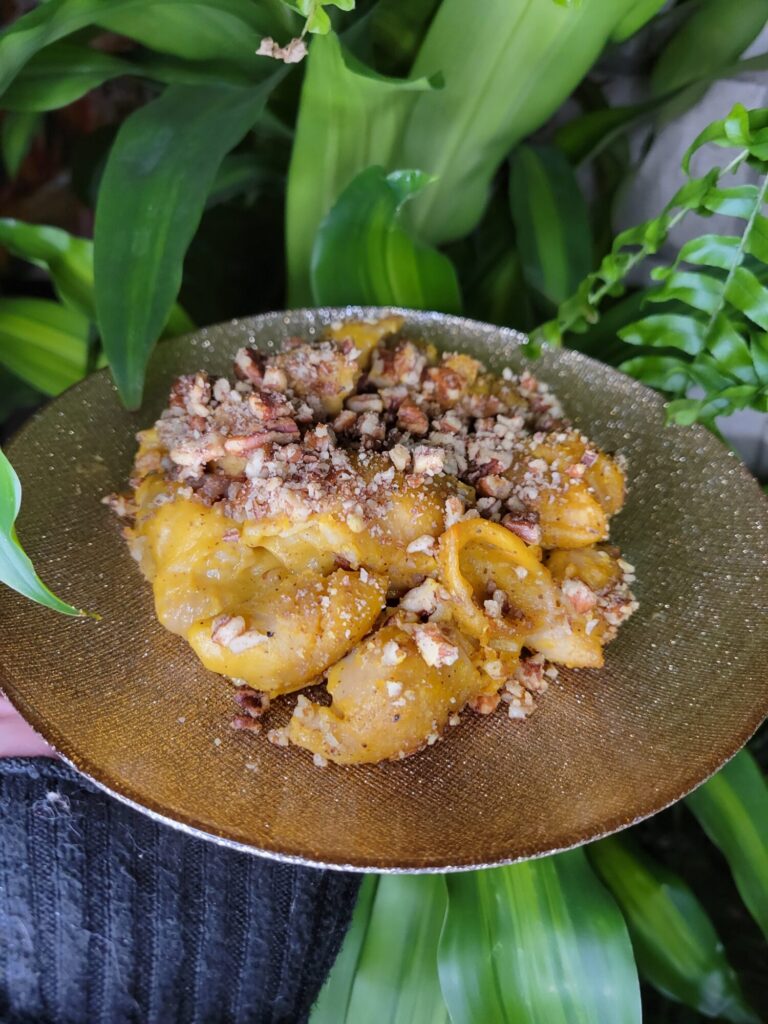
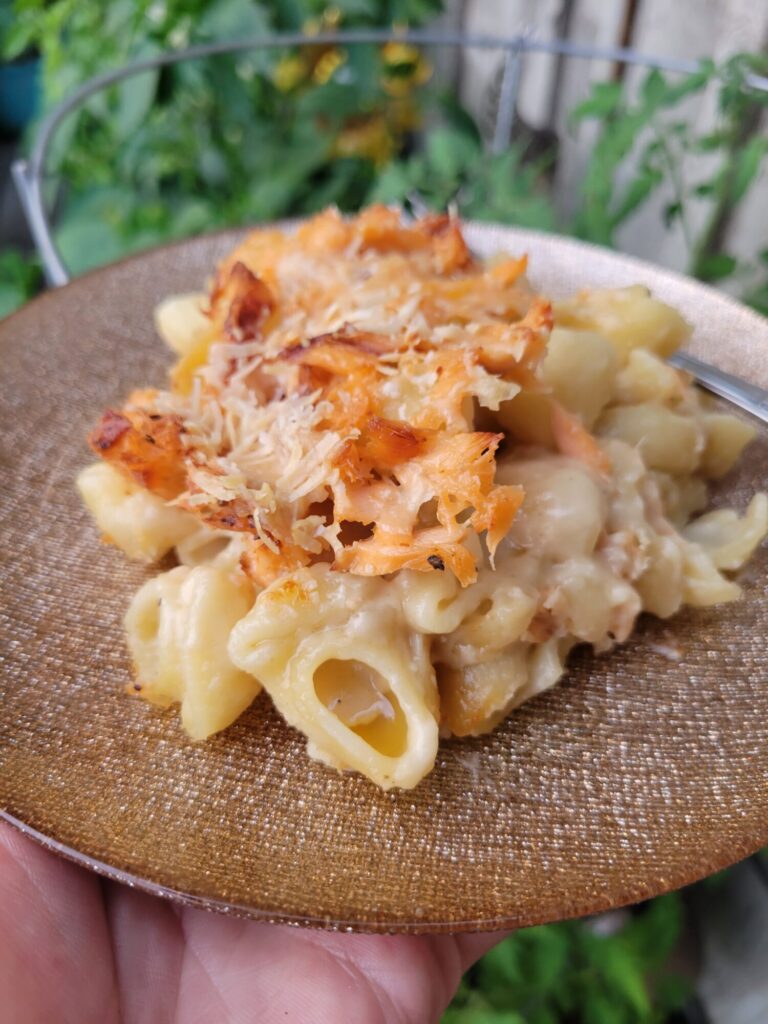
Add-in Toppings for Macaroni & Cheese
Macaroni and cheese is incredibly versatile. It's a great way to add in your favorite produce or sneak fruits and vegetables in. Also don't be shocked that the list starts with apples. It's like a cheddar and apple pie; It's delicious. It's also the first letter of the alphabet. Pulling off sweet and savory also makes you seem more innovative than it actually is difficult to make. You can also roast and/or blend the produce for an added flavor or to hide the texture of chunky veggies.
- Apples
- Broccoli
- Carrots
- Celery
- Corn
- Garlic
- Mushrooms
- Nuts
- Peas
- Bell peppers (i.e. red bell peppers)
- Mild peppers (i.e. poblanos, Anaheims)
- Hot peppers (i.e. jalapeños, habaneros)
- Shallots
- Spinach
- Squash
- Tomatoes
I don't tend to eat much meat. Although bacon, ham, and prosciutto are classic additions. I also tend to use Lobster and Patagonian Shrimp. Cajun and Buffalo chicken-style macaroni's also sound fun for meat-eaters.
This list might sound like just... any fruit or vegetable that you like. But macaroni and cheese is a great dish to toss whatever you like into it! It's one of those foods that almost universally tastes good with a multitude of flavor profiles. Mexican-style macaroni and cheese with chilis and sour cream. Thai-inspired macaroni and cheese with curried potatoes. The sky is the limit!
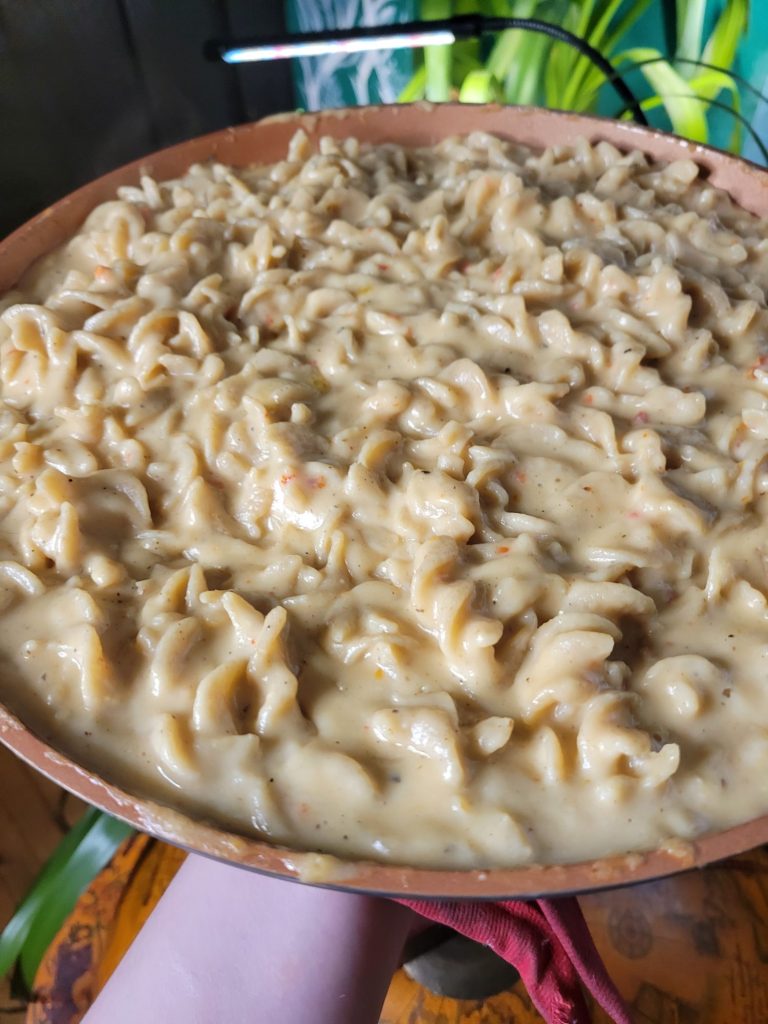
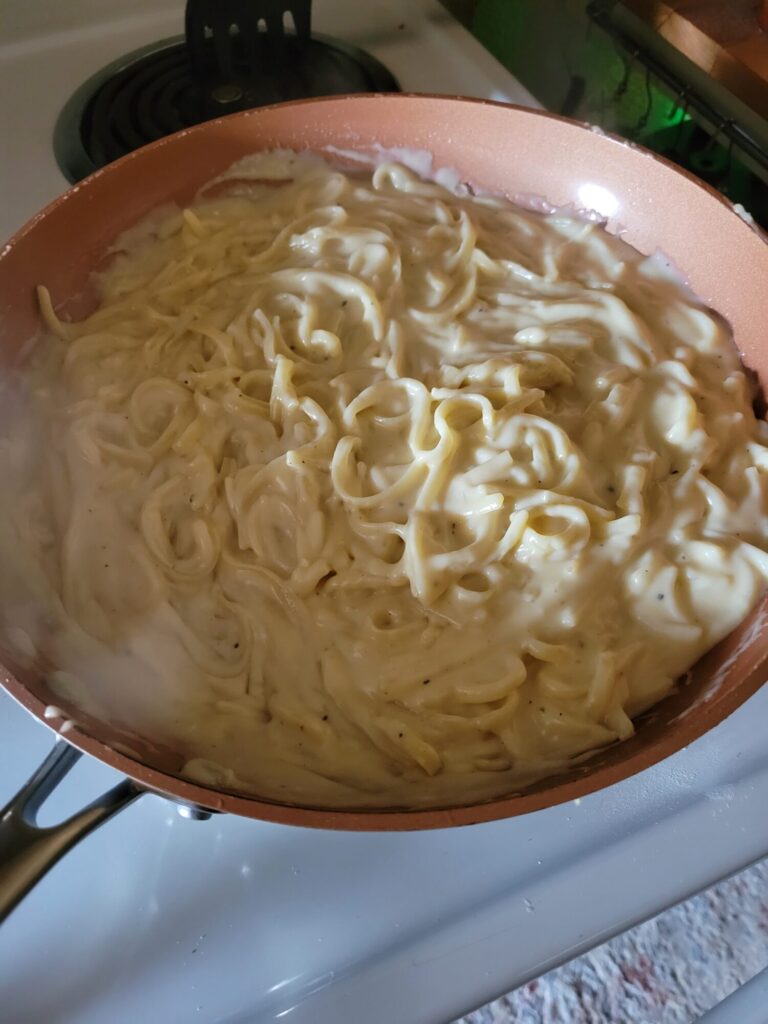
Do You Need Macaroni Noodles?
I frequently don't use macaroni noodles. When I make my own pasta, I usually just do fettuccini because it's easy to roll out. When I use store-bought noodles, though, I still almost never actually use macaroni. I have no good reason for this, but it's simply not my favorite pasta shape. I'm more partial to shells, rigatoni, and fusilli. Although you can do whatever type of pasta you like. For special occasions, I also like to break out the oversized noodles. Which are surprisingly becoming more available at more specialized grocers, like Whole Foods and Sendik's.
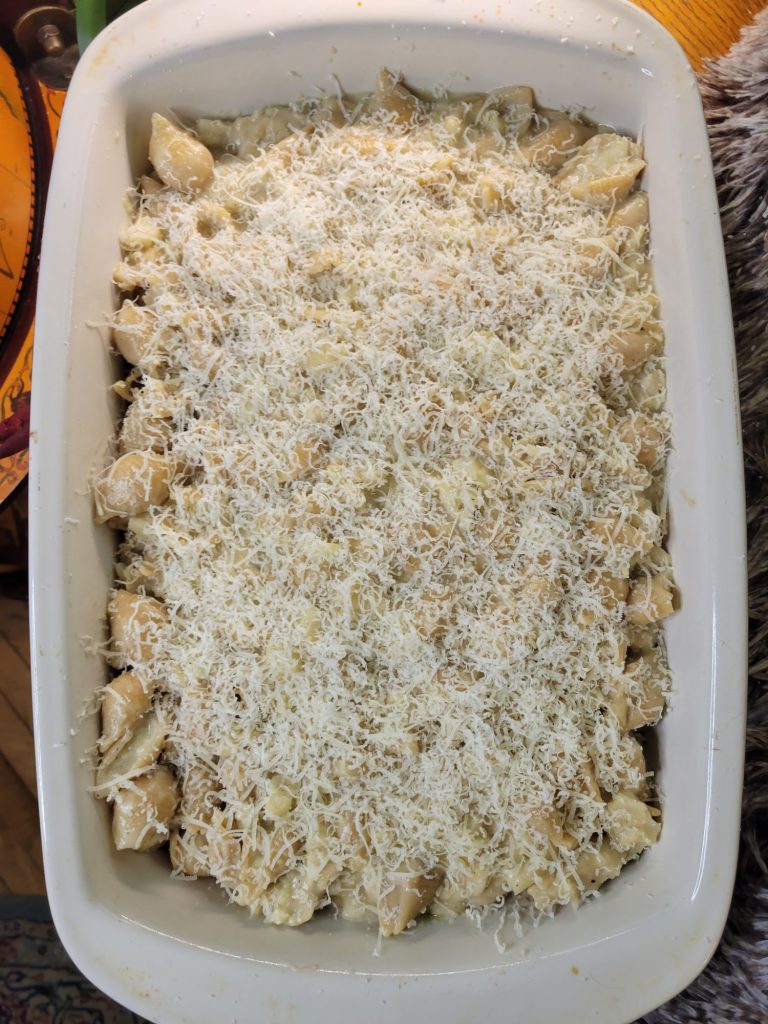
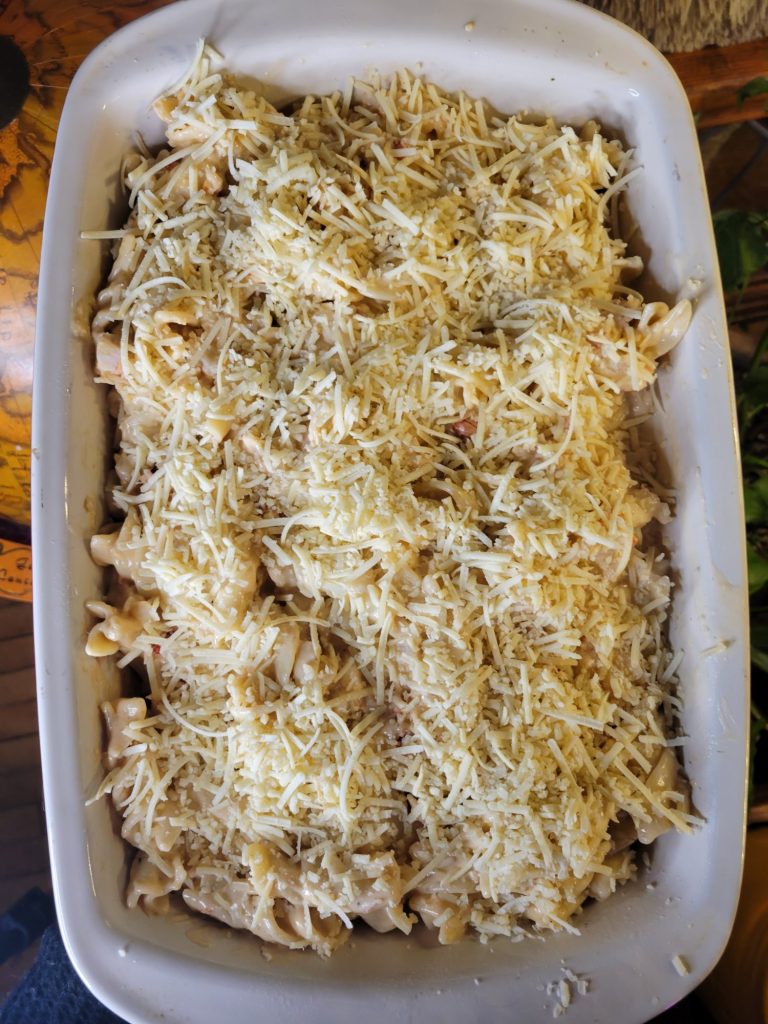
Cheese Substitutes for Macaroni & Cheese
Cheddar might be the classic macaroni cheese. Maybe a sharp white cheddar, if you're feeling fancy. Although macaroni and cheese works with a wide range of cheeses. I'd recommend a semi-soft to a semi-hard cheese. Harder cheeses (i.e. parmesan, Romano, gouda, etcetera) I'd just sprinkle on top because they don't melt well at oven temperature.
I'm going to separate cheese suggestions into cheeses that you can use as a 1x1 substitution for cheddar. With an additional section for cheeses that I would mix in with a cheese from the other column. It's not to say that you couldn't use brie or Swiss cheese as the only cheese. These cheeses are just going to be more difficult to make a roux out of without it breaking! And nothing's more frustrating than a broken sauce.
1x1 Substitution
- Cheddar
- White cheddar
- Provolone
- Velveeta
Partial Substitution
- Blue cheese
- Brie
- Emmentaler
- Fontina
- Gruyère
- Muenster
- Pepper Jack
- Swiss
A lot of recipes are going to add a dash of breadcrumbs and/or parmesan cheese on of the macaroni and cheese. This makes a crunchy shell on top while baking. Although any toppings are entirely optional.
There's also an entire section on vegan substitutes below.
It's important to note that you cannot use pre-shredded cheese. The pre-grated cheese that you get in grocery stores is coated in an anti-caking agent in order to keep it from sticking together in the bag. This inhibits the cheese's ability to melt. So, go out and get a cheese grater. I highly recommend a rotary cheese grater. They're about $10-30 and an absolute game changer.
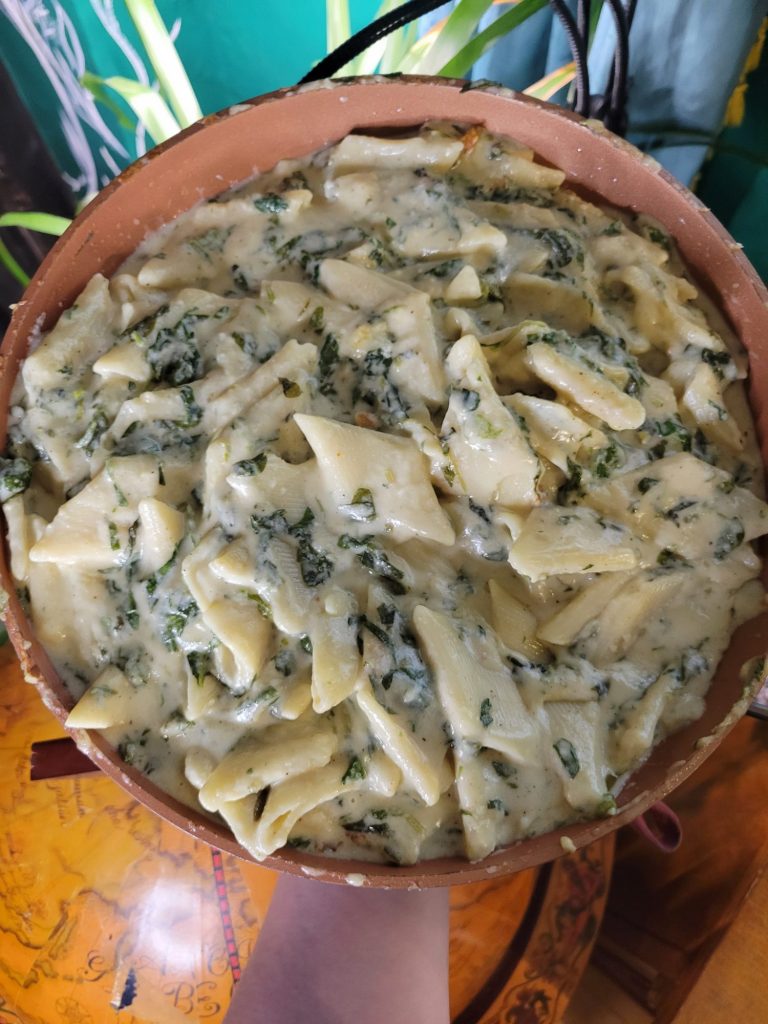
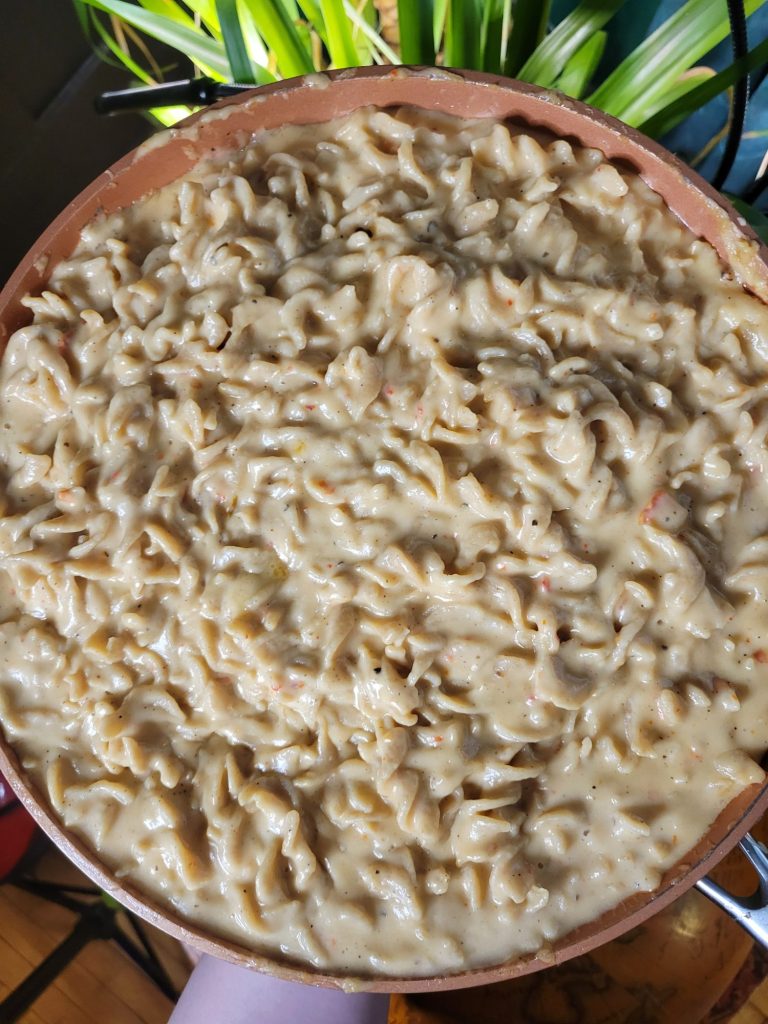
Milk Substitutes for Macaroni & Cheese
Personally, I don't tend to keep milk in the house. I'll buy it for special recipes, but it's not something that tends to be in my refrigerator and I hate going out for just one item! So, I often substitute Greek yogurt for macaroni and cheese. You can do this by doing a 3/4x1 Greek yogurt to milk ratio and then adding in the extra 1/4 ratio of pasta water. Greek yogurt is obviously going to be a bit thicker than milk, so the pasta water helps water it down. You can also use wine, instead of water.
On the more fun and decadent side of the milk substitutes,
- Greek yogurt
- Sour cream
- Cream cheese
- Heavy whipping cream
- Mascarpone
I have tried to use kefir, but it tends to have some of the same problems as almond milk and other dairy substitutes where it's too thin to combine the way that milk does. There are people who use these types of non-traditional dairies. Although I would recommend adding in an emulsifier, like corn starch, if you're going to try. They just don't thicken the way that milk is more amiable to.
Mascarpone might also be a cheese, but we're using it more like a liquid here. You could use 100% mascarpone. Although I would probably add in a white cheddar cheese or something along with it.
There are entire sections on wine and vegan substitutes below.
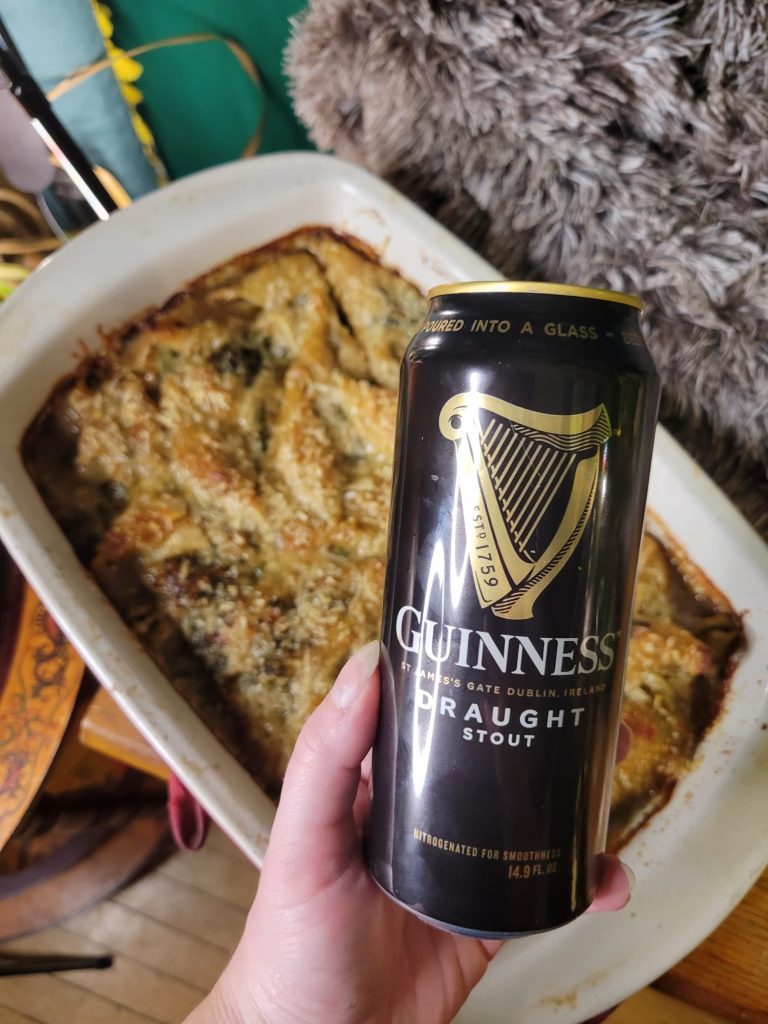
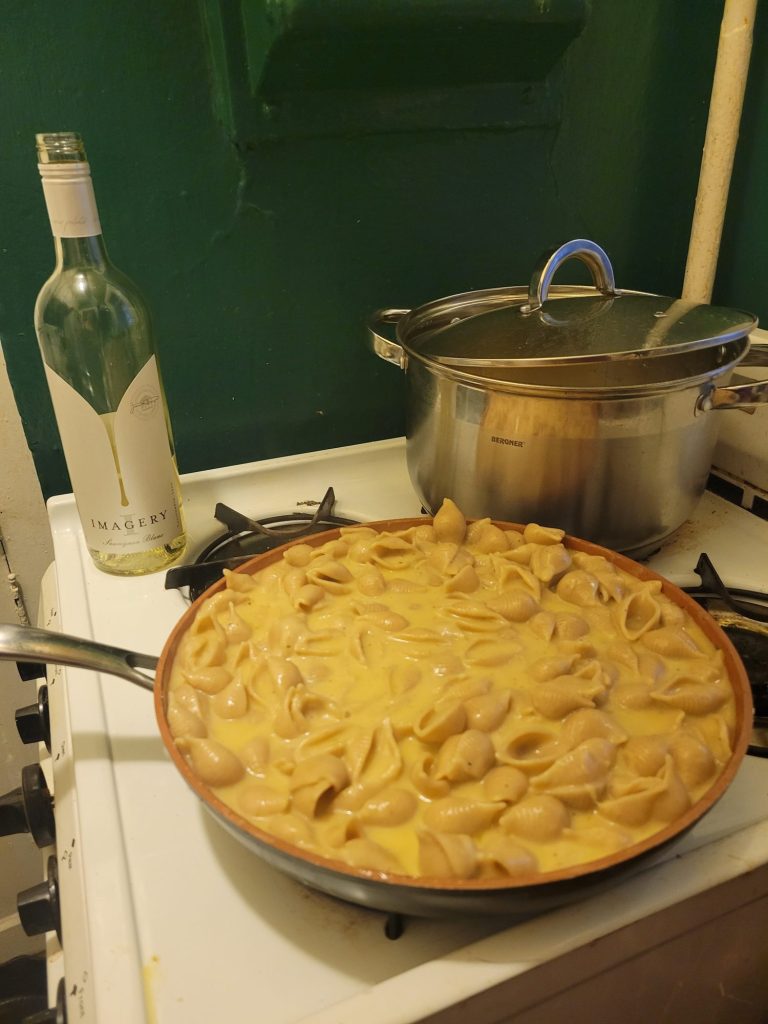
Adding Wine or Beer to Macaroni & Cheese
One of my favorite ways to elevate a dish or make a childhood favorite seem a little bit more grown up, I add in a splash of wine. It can help thin out a sauce, without watering it down and add a pop of citrus.
Wine is also acidic. Adding too much can make it easier for the roux to break. So, use it sparingly or add in a little bit of corn starch to even out the consistency.
I like to use a dry white wine because it will become sweeter as it cooks. You can use any wine that you prefer, though. I tend to use sauvignon blanc. It doesn't need to be expensive, but do make sure that you enjoy the flavor because you will be able to taste it. Needless to say, the leftover wine also makes a good pairing for the dish.
It's important to note that adding liquor will thin the sauce. It's a great option if you've added too much cheese and want to thin it out with watering it down. Adding liquor will also make the macaroni and cheese crispier because of the way that the alcohol evaporates out. An hour of cooking (including simmering and baking) will also retain 25% of the alcohol. It would take 2.5 hours of cooking to reduce the alcohol content to 5% (USDA). So, don't feed this to children.
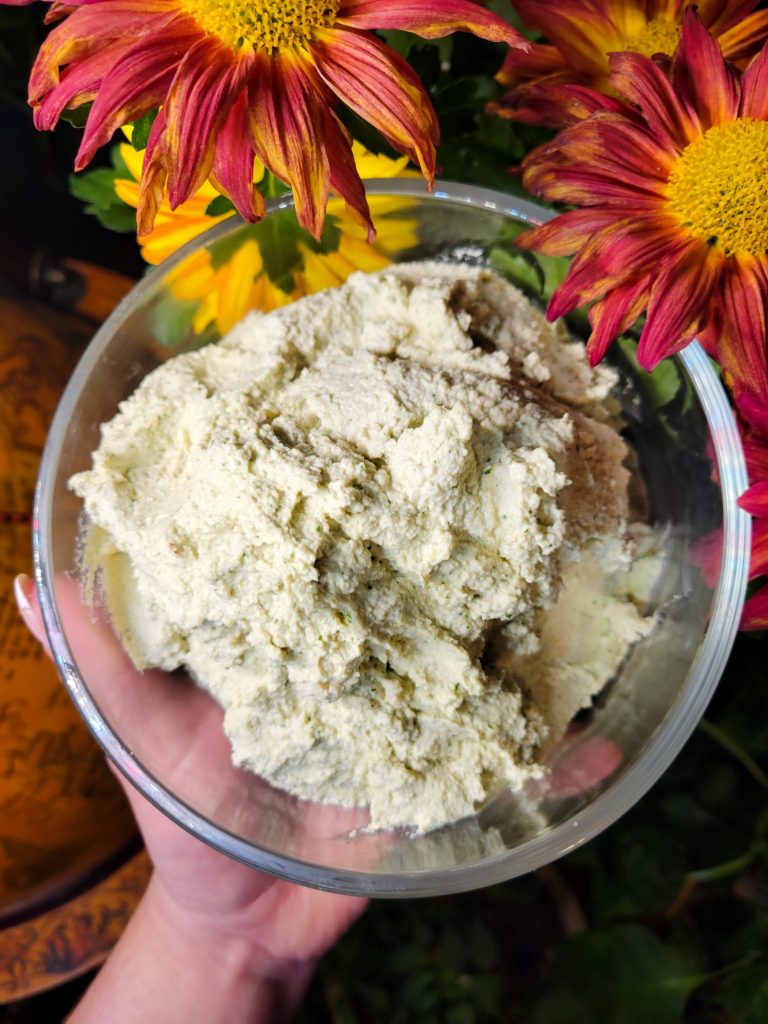
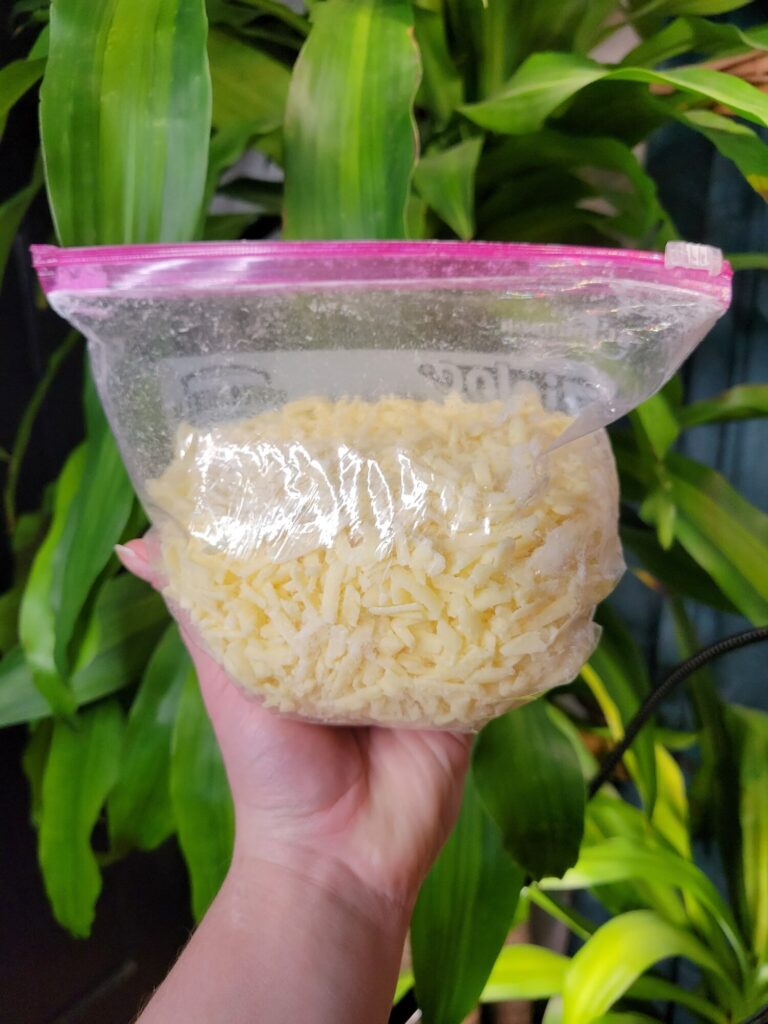
Vegan
Vegan macaroni and cheese is surprisingly simple to make. There are plenty of vegan butter alternatives to choose from. Good old fashioned margarine, for example, is vegan. Vegetable shortening and other mass marketed vegan butter substitutes can also be used in a pinch. They tend to be right next to the butter in most grocery stores or in a specialty vegan section adjacent to the typical dairy. Just about any vegan milk alternative will do. Substitutes like coconut milk, with a slightly higher fat content, tend to work a little bit better. If you're having trouble with it thickening, feel free to add corn starch or another emulsifier.
There are also a plethora of vegan cheeses on the market. These don't tend to melt well, but they are options. I hate to be the one to recommend the same old tired things, but cashews soaked overnight and blended with a little bit of lemon juice and nutritional yeast is a classic for a reason. The slightly grainy texture of cashews also works well with the consistency of macaroni and cheese. Vegan cheese "spreads" also tend to have a slightly better flavor. They might not have that ooey gooey texture. If you're into a runnier macaroni and cheese, though, the taste is can be something fun to play around with.
Can You Reheat Macaroni & Cheese?
I wouldn't recommend it. Macaroni and cheese is one of those dishes that's best served straight out of the oven. Cheese dishes in general don't reheat well. Cheese likes to separate when it's rapidly heated. One of the only ways to combat this is to slowly heat over a low temperature and stir almost constantly. When you've already baked macaroni, it's not quite amiable to this process any more.
You can make macaroni and cheese ahead of time, though. It's a great dish to prepare the day before. Prepare the roux, pour everything into a baking dish, and then refrigerate until you're ready to bake. Then, just pop into the oven an hour before you're ready to serve.
If you really have to reheat macaroni and cheese, though, you can preheat the oven at 350 degrees Fahrenheit and cook for about 15 minutes. It's not ideal. After refrigeration, the noodles typically harden and the lasagna tends to dry out. The pasta will likely overcook during this process. And the cheese tends to separate and get oily if you reheat too rapidly. But this is an option. Just blot the grease before serving.
Whatever you do, absolutely do not put macaroni and cheese in the microwave!!
Alternatively, you can reheat on the stovetop. Just place in a skillet with a lid and slowly bring the heat to medium. When the macaroni begins to soften, carefully spear with a silicone spatula to separate. Continue to heat with the lid on and stir occasionally. You may need to add additional milk or Greek yogurt to this to help prevent the noodles from drying out and the cheese from separating.
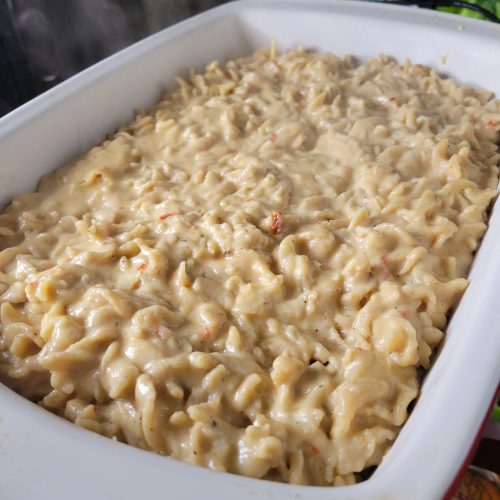
The Fundamentals of Macaroni & Cheese
Equipment
- Large Baking Dish
- Oven
- Large Pot
- Skillet
- Stovetop
Ingredients
- 1 lbs. macaroni (or pasta of choice)
- 1/4 c. butter
- 1/4 c. all-purpose flour
- 1/2 tsp. salt
- 1/2 tsp. pepper
- 1 tsp. mustard
- 1 tsp. Worcestershire sauce
- 1 ½ c. milk (or dairy of choice)
- 1/2 c. pasta water (or liquor of choice)
- 2 c. cheddar cheese grated (or cheese of choice)
- 1/3 c. parmesan grated
Instructions
Cook Pasta
- Add about 4 inches of water to a large pot and bring to a boil over high heat.
- Cook pasta according to the manufacturer's instructions. This typically entails boiling for about 8-12 minutes, or until barely al dente.The pasta will cook another half hour in the oven, so make sure not to overcook them during this stage!
- DO NOT DRAIN. Remove the pasta from the water with a slotted spoon or pour the water into a heat-safe bowl. Tap water will not taste the same. You want to use the water that the pasta has been boiling in.You may want to stir it occasionally to keep the noodles from sticking together.
Prepare Roux
- Preheat the oven to 350 degrees Fahrenheit.
- Lightly coat the bottom and sides of a large baking dish with olive oil and set aside.
- Preheat saucepan on medium-heat. Add 1/4 cup butter and melt.
- Immediately when the butter melts, add flour and stir constantly until incorporated. This should take about 3 minutes.Do NOT brown or overcook, though. You just want the butter and flour to incorporate until you add the spices.
- Add salt, pepper, mustard, and Worcestershire sauce. Stir constantly for 5 minutes, or until lightly browned.
- Add milk, a little at a time, and stir constantly until incorporated after each addition. Adding too much at once can cause the roux to separate. Although this is less of an issue with yogurt as it is milk or cream, it is still something to watch out for!Meanwhile, grate the cheese and add to roux 1/2 cup at a time. Mix constantly until fully incorporated.
- Add just enough of the reserved pasta water to thin out the sauce. I typically use about 1/4 to 1/2 cup. Although it does vary slightly from batch to batch.You want the sauce to be about the consistency of an Alfredo sauce. It should spread easily, but is not a liquid. I would suggest airing on the side of caution and adding less, mixing the pasta in, and then adding more if necessary for it to achieve the quintessential macaroni and cheese texture.
- Add noodles and stir until fully coated in the cheese sauce.If necessary, add more water to achieve the right consistency.
Bake Macaroni & Cheese
- Pour macaroni and cheese into greased baking dish.
- Grate parmesan cheese over the top.
- Bake for 30-40 minutes, or until the top begins to brown.
- Let cool slightly and cut into 2-inch squares. Serve immediately.
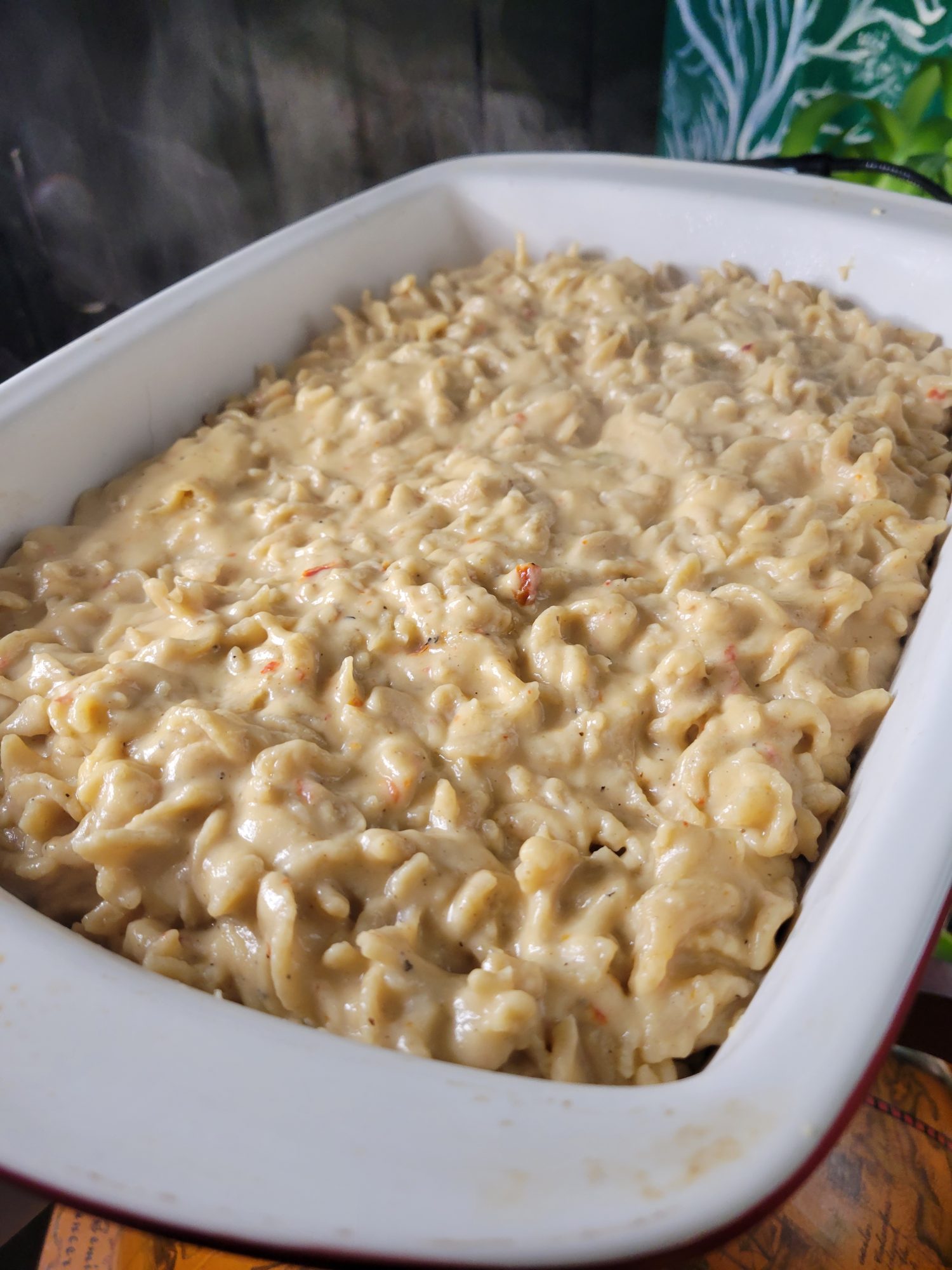
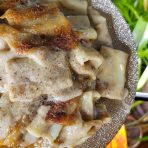
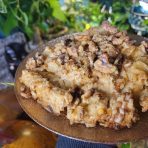
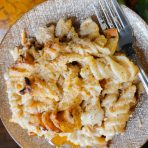
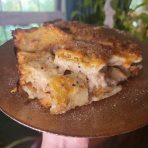
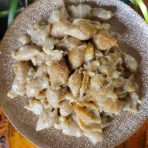

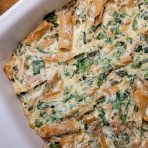
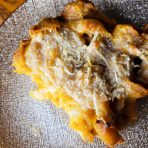
Leave a Reply